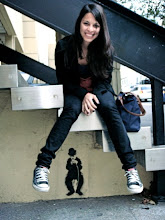
F.W. Murnau used a number of techniques to emphasized oddity and horror in his film Nosferatu. Such techniques include editing, shadows, chiaroscuro, close-ups, negatives, superposed images, and mises en scène that emphasize symbolic gestures and objects. A scene in which the editing technique creates a horrifying effect is the night when as Nosferatu is chasing Hutter, who had just found out that he is a vampire. As Nosferatu approaches Hutter, Murnau cuts the scene to a high angle shot of a forest and river, which are shaped as a distorted image of the vampire. When the shot returns to Hutter’s bedroom, there is coat hanging on the wall that is also extremely similar to the vampire’s body. The interposition of these images in the editing of the scene creates the feeling that there is no escape from Nosferatu. The use of symbolic cues can also be identified in the beginning of the film when Hutter first steps into his hotel room. As Hutter enters into the room, the first thing he does is placing his hat on the bed. In some places of Europe such as Italy, popular folklore sustains that placing a hat on the bed is a sing of death. Therefore, this early shot is an establishing shot or premonition to what is to come in the film.
In addition to symbolic cues and editing techniques, Murnau masters the use of chiaroscuro and shadows. For example, the scene in which Nosferatu is silently watching his pray is especially spooky because, within the complete darkness of the room, we partially see his face in the light. The use of shadows aggravates his awkward features, making him even more scary.
According to Ashbury, there are numerous possible interpretations for the film. I believe that the most accurate would be interpreting the film as “a complex meditation on the dynamics of human desire” (59). According to this point of view, the film is exploring the human psyche and its retrieving desires as we enter into adulthood and thus into the norms of society. Nosferatu is constantly paralleled with other animals that are killing their preys. Therefore, this editing places him in the same sphere of animals, taking him out of the human society and bringing him back to his instinctive nature. Nosferatu thus represents the human desires and instincts that are suppressed once humans abide to the norms of society.

No comments:
Post a Comment